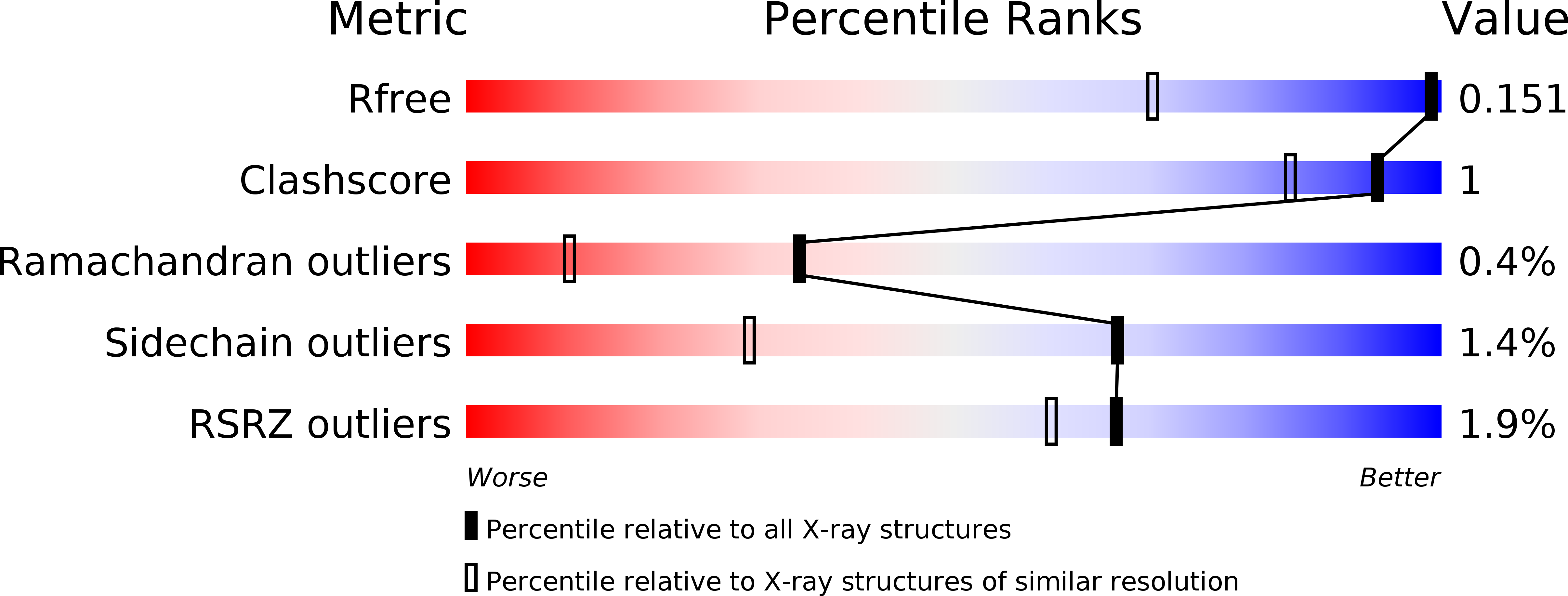Acetylation of Surface Carbohydrates in Bacterial Pathogens Requires Coordinated Action of a Two-Domain Membrane-Bound Acyltransferase.
Pearson, C.R., Tindall, S.N., Herman, R., Jenkins, H.T., Bateman, A., Thomas, G.H., Potts, J.R., Van der Woude, M.W.(2020) mBio 11
- PubMed: 32843546
- DOI: https://doi.org/10.1128/mBio.01364-20
- Primary Citation of Related Structures:
6SE1 - PubMed Abstract:
Membrane bound acyltransferase-3 (AT3) domain-containing proteins are implicated in a wide range of carbohydrate O-acyl modifications, but their mechanism of action is largely unknown. O-antigen acetylation by AT3 domain-containing acetyltransferases of Salmonella spp. can generate a specific immune response upon infection and can influence bacteriophage interactions. This study integrates in situ and in vitro functional analyses of two of these proteins, OafA and OafB (formerly F2GtrC), which display an "AT3-SGNH fused" domain architecture, where an integral membrane AT3 domain is fused to an extracytoplasmic SGNH domain. An in silico -inspired mutagenesis approach of the AT3 domain identified seven residues which are fundamental for the mechanism of action of OafA, with a particularly conserved motif in TMH1 indicating a potential acyl donor interaction site. Genetic and in vitro evidence demonstrate that the SGNH domain is both necessary and sufficient for lipopolysaccharide acetylation. The structure of the periplasmic SGNH domain of OafB identified features not previously reported for SGNH proteins. In particular, the periplasmic portion of the interdomain linking region is structured. Significantly, this region constrains acceptor substrate specificity, apparently by limiting access to the active site. Coevolution analysis of the two domains suggests possible interdomain interactions. Combining these data, we propose a refined model of the AT3-SGNH proteins, with structurally constrained orientations of the two domains. These findings enhance our understanding of how cells can transfer acyl groups from the cytoplasm to specific extracellular carbohydrates. IMPORTANCE Acyltransferase-3 (AT3) domain-containing membrane proteins are involved in O -acetylation of a diverse range of carbohydrates across all domains of life. In bacteria they are essential in processes including symbiosis, resistance to antimicrobials, and biosynthesis of antibiotics. Their mechanism of action, however, is poorly characterized. We analyzed two acetyltransferases as models for this important family of membrane proteins, which modify carbohydrates on the surface of the pathogen Salmonella enterica , affecting immunogenicity, virulence, and bacteriophage resistance. We show that when these AT3 domains are fused to a periplasmic partner domain, both domains are required for substrate acetylation. The data show conserved elements in the AT3 domain and unique structural features of the periplasmic domain. Our data provide a working model to probe the mechanism and function of the diverse and important members of the widespread AT3 protein family, which are required for biologically significant modifications of cell-surface carbohydrates.
Organizational Affiliation:
York Biomedical Research Institute, University of York, York, United Kingdom.
















